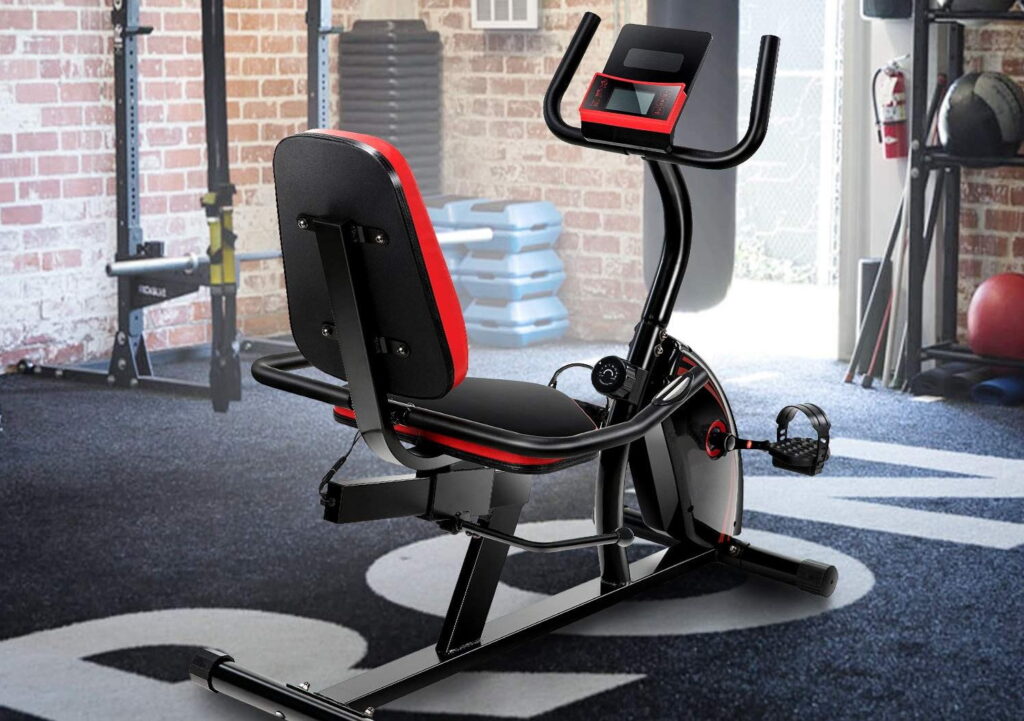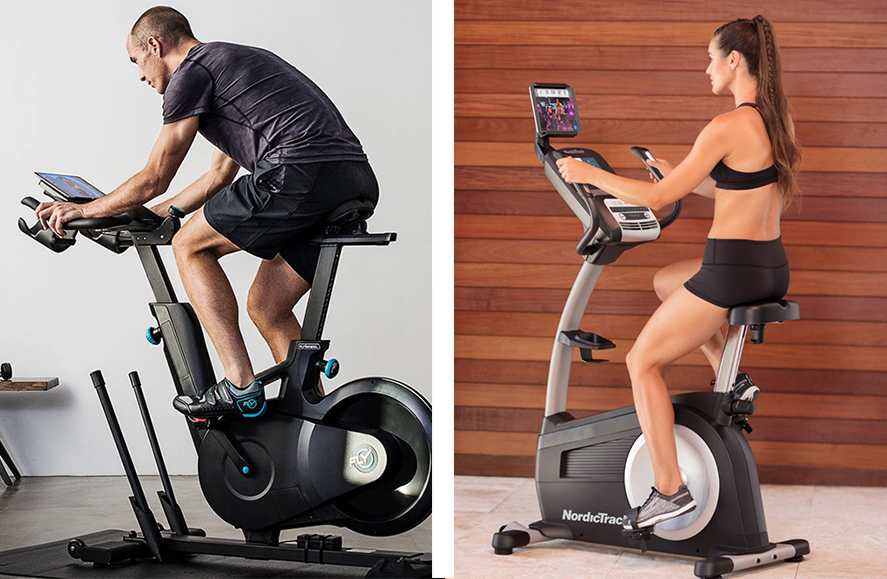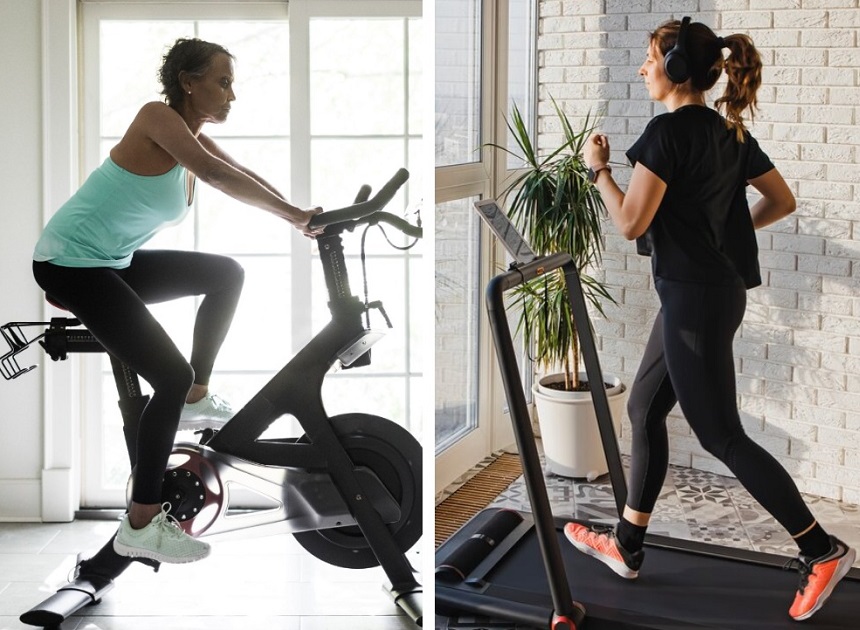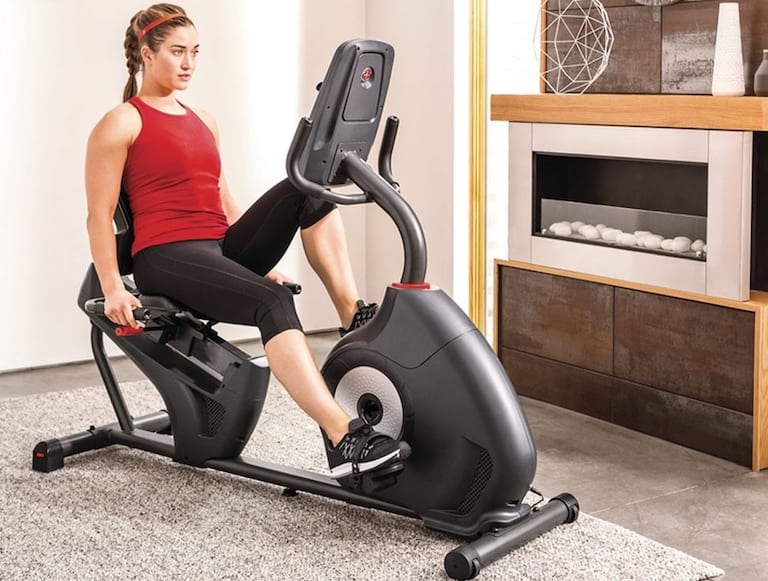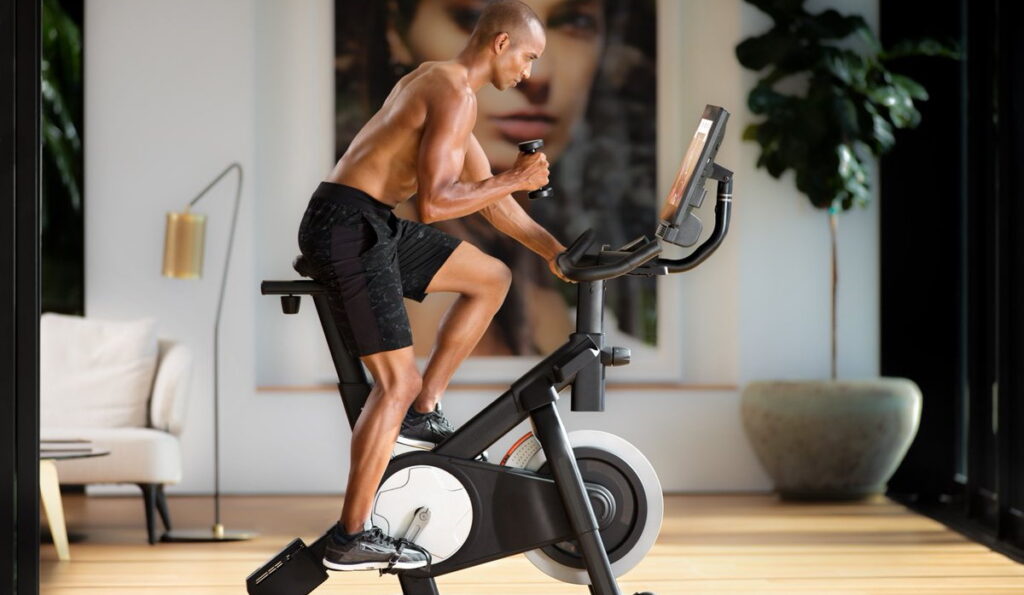Cardiovascular exercises, also known as cardio or aerobics, are a great way to stay in shape. This is a specific type of physical exercise that increases the use of oxygen within your body. Figuring out how to get your cardio is another thing altogether. Biking and running are some top options for cardio workouts. But even still, there’s some controversy – stationary bike vs. running – which one do you pick? Whether you want to head to the gym on a weekly basis or a daily basis, there are options available for a sweat-filled cardio workout. A stationary bike and running track are available at most recreation centers. Not only that, both a stationary bike and a stationary treadmill are easy to have right in your home. Bringing your workout into your home is a great option for many people, especially those that work from home or want to work out remotely. Each biking and running have its merits and its downfalls, but how do you choose between them? When it comes to getting your cardio in, make sure you’re getting the most impact for your workout. Sometimes that’s hard to do when you’ve got several options at a gym or recreational facility, or even your own home gym.
Both are forms of cardio that provide amazing health benefits. There’s a long list of benefits Trusted Source Benefits of a Cardio Workout – Cleveland Clinic When part of an overall heart-healthy lifestyle, not only can regular cardio exercise lead to an increase in your resting blood pressure and heart rate, but these basic changes can also mean your heart doesn’t have to work unnecessarily hard all of the time, says clinical exercise physiologist Erik Van Iterson, PhD, MS. health.clevelandclinic.org , including improved mental health, boosted metabolism cycles, bone, and joint health, increased heart health, and just overall wellbeing.

Not only does regular cardio improve your physical health, but also your mental health as well. The Mayo Clinic Trusted Source Depression and anxiety: Exercise eases symptoms - Mayo Clinic Exercise helps prevent and improve a number of health problems, including high blood pressure, diabetes, and arthritis. Research on depression, anxiety, and exercise shows that the psychological and physical benefits of exercise can also help improve mood and reduce anxiety. www.mayoclinic.org explains that the symptoms of mental illness such as depression and anxiety often improve with exercise. With a bit of motivation, exercise can make a major difference in energy levels and mood. Excursive and cardio do this in a variety of ways, releasing feel-good endorphins, distracting your mind from negativity, increasing social interaction, gaining confidence, and developing healthy coping mechanisms.
Exercise, and any kind of exercise, can Trusted Source Physical activity Regular physical activity is proven to help prevent and manage noncommunicable diseases such as heart disease, stroke, diabetes and several cancers. It also helps prevent hypertension, maintain healthy body weight and can improve mental health, quality of life and well-being. www.who.int reduce the risk and the severity of various metabolic syndromes. It encourages your metabolic system to kick into high gear, improving your drainage and digestive systems.
Did you know that when you exercise, you’re also exercising your bones and joints? According to National Institute Of The Health Of Osteoporosis And Related Bone Diseases National Resource Centre explains Trusted Source Exercise for Your Bone Health | NIH Osteoporosis and Related Bone Diseases National Resource Center Vital at every age for healthy bones, exercise is important for treating and preventing osteoporosis. Not only can exercise improve your bone health, but it can also increase muscle strength, coordination, and balance, and lead to better overall health. www.bones.nih.gov that there are a few different impacts that exercising has on your bones, resulting in some workouts being better for your bone and joint health. Exercises that include weight-bearing and resistance are the best options for working out your bones. These need bones to work against gravity, thus strengthening them. That means that running is fantastic for strengthening and working out your knees. However, other cardiovascular workouts like swimming or cycling don’t provide the same amount of resistance.
The difference, essentially, is that running is better for strengthening your joints, whereas cycling is a better option for those that struggle with joint pain or injuries.
Take your health into your own hands by working out your heart with cardio. Cardiovascular exercise, or cardio for short, has dozens of amazing health benefits. As we all know, cardio is one of the top workouts suggested by doctors and dieticians for improving your overall health. It’s one of the reasons why it’s an essential part of a daily routine. Working out with a cardiovascular workout 30 – 60 times each day can limit your risk of blood clots, heart disease, and high blood pressure.
When it comes to choosing between the two forms of cardio, how do you do it? That’s a good question. There are several differences in how these workouts work out your body. Although they are both forms of cardio, they train different muscles in your body. There’s also a difference in how many calories are burned. Then there are different risks to both a stationary bike and running.
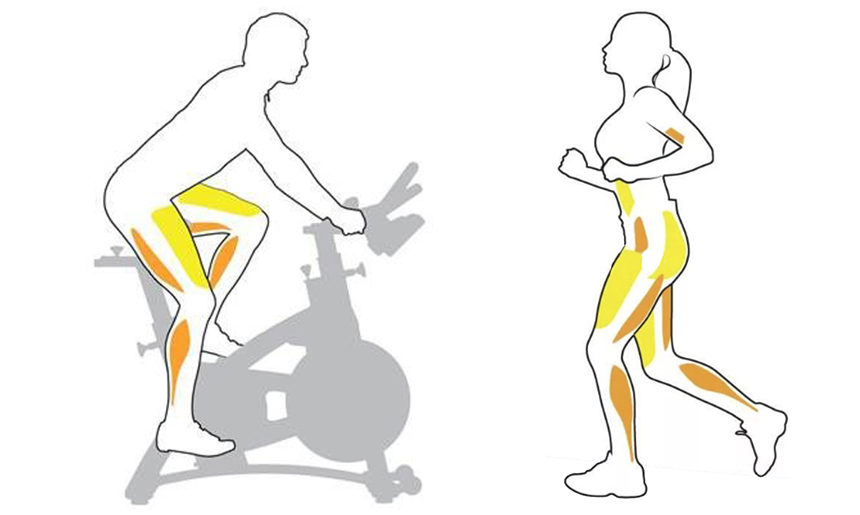
A stationary bike helps build strength, specifically in your legs and lower body. Muscles include your calves, hamstrings, quadriceps, core, back, and glutes. Running is another exercise that improves muscle strength in the lower body. A study published in the Journal Exercise and Sport Sciences Reviews Trusted Source Skeletal Muscle Hypertrophy after Aerobic Exercise Training - PMC Current dogma suggests aerobic exercise training has minimal effect on skeletal muscle size. We and others have demonstrated that aerobic exercise acutely and chronically alters protein metabolism and induces skeletal muscle hypertrophy. These findings promote an antithesis to the status quo by providing novel perspective on skeletal muscle mass regulation and insight into exercise countermeasures for populations prone to muscle loss. www.ncbi.nlm.nih.gov discovered that running uses repetitive weight-bearing motion. Just like with bone and joint stretch, this strengthens the muscles that are being used, such as your lower body, glutes, quads, and hamstrings.
Though it’s difficult to make specific predictions for calories burned on a stationary bike or while running, there are estimations that can be easily made. For example, a 30-minute workout of stationary biking burns approximately 210 calories for a 125-pound person and 292 calories for a 185-pound person. The number of calories burnt on time and the weight of the person. Running is similar. Weight is a factor in how many calories are burned during a workout. Someone that weighs 120-pounds burns about 11 calories each minute they spend running. For each minute of running, someone that weighs about 120 pounds will burn 11.4 calories. For each minute of stationary biking, someone that weighs about 120 pounds will burn 8.4. What burns more calories? Running tends to burn more calories than a stationary bike.
Working out, in general, comes with risks; strained muscles, hurt tendons, sprained joints, dehydration, high blood pressure, and more. Make sure to listen to your body. Keep drinking water during your workout as well as taking breaks when needed. Cardio is supposed to help your health, not harm it. When it comes to running, there are a few more environmental risks to be aware of. Many people enjoy running out in their neighborhood which can be safer depending on where you live. Other factors, such as traffic, weather, terrain, and location, can all impact the safety and the risks of running. Having an at-home gym with a stationary treadmill can help limit those risks. Let’s look at bringing running easily into your home. With a simple exercise machine, you can work out anytime at your own pace. With high recommendations and great reviews, the Nordic Track Commercial Series treadmills are a great addition or start to any home gym. Coming with a 30-Day ifrit Membership, Immersive 10-inch interactive HD touchscreen streams, incline control, and speed control, you’re able to take your running to the next level.
Yes. There’s a big difference between stationary bikes and typical riders’ bikes. Both provide a great cardio workout. One is easy to have right at home. Take the Yosuda Indoor Cycling Bike Stationary Bike, for example. This is a cycle bike with an iPad mount & comfortable seat cushion, which is perfect for an in-home gym. This is a smooth stationary exertive bike with a 35lbs flywheel and heavy-duty steel frame. It’s guaranteed to provide a more stable, smooth, and quieter ride. With an LDC monitor and an iPad mount, this exercise bike tracks your time, speed, distance, calories burned, and odometer allowing you to track your progress and share it with your professional health team. With all these additional elements, it’s not only easy to get healthy but convinced as well.
There are quite a few differences between running and using an excursive bike. Both are fantastic ways to burn calories, lose weight and improve health. Running is more useful for burning more calories and stretching your overall health. Stationary bikes are more useful for low impact on your joints and bones, as well as more of a simple and safe exercise.
Make sure to know your body and your health when choosing the optimal cardio workout for you. Whether you’re looking for a low-impact, simple kind of excursive like the stationary bike or higher intensity and high-calorie burn workout with a run, make sure you’re aware of the options. Although we’ve compared the two forms of excursive, we didn’t answer which one you should pick. Which is better – treadmill or exercise bike? It depends on what your health needs. Tag us on your favorite social media to share your cardio journey, or comment below! We want to hear whether you prefer a stationary bike vs. running.
